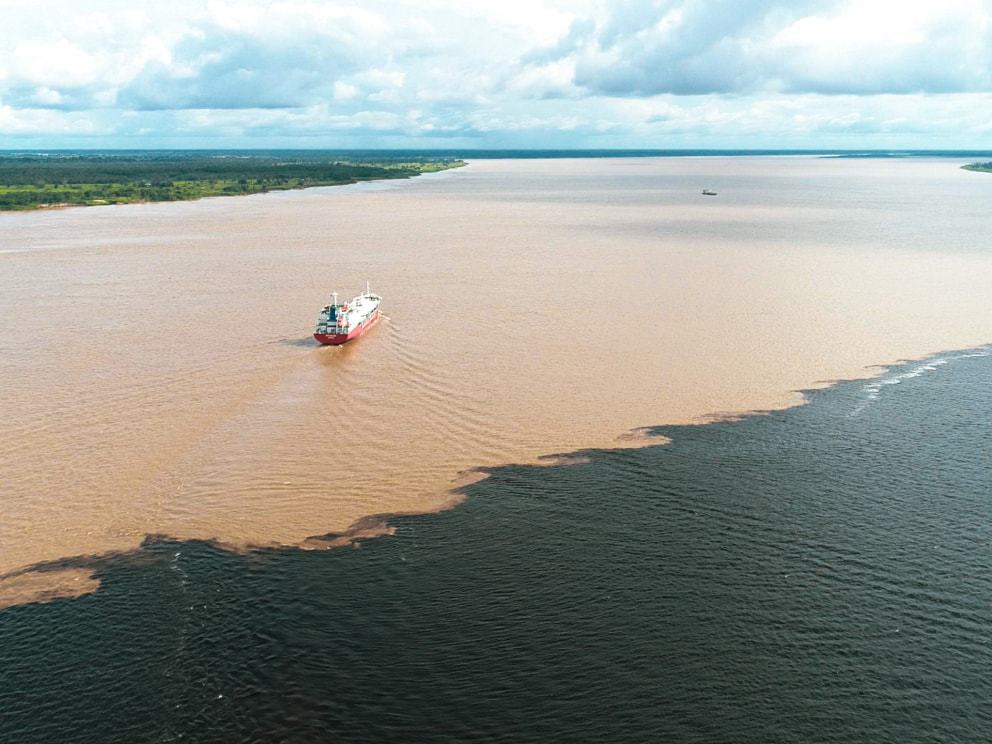
BW Epic Kosan speaks with Captain Francis P. Marañon, Master of LPG Carrier Epic Baluan to understand more about his work onboard an LPG carrier and trading in the Amazon River.
Tell us about yourself and how you became a Captain with BW Epic Kosan?
Captain Francis P. Marañon (FM): I am the ninth of 11 children in my family. I graduated from high school in 1991 and a seafaring career was a popular profession in my community. I graduated with a Bachelor in Science and Marine Transportation (Honors) from the Visayan Maritime Academy in 1994. I started sailing in 1995 as a deck trainee and have since sailed on many types of vessels – container vessels, oil tankers, chemical carriers, pressurised, semi-refrigerated, refrigerated and ethylene vessels. In 2011, I was promoted to the rank of Captain and in 2016, I joined BW Epic Kosan and have not looked back.
What is it like sailing on the Amazon River?
Being on the river like the Amazon is not unusual to me as most of my years sailing in Europe, UK and France were always on rivers – such as the Scheldt, Rhine, Rouen, and inland Japan and China. The Amazon River is of course special, as it is home to amazing wildlife and is flanked by dense rainforests. The Amazon River is a “monstrous” thing – very dominant in the community, very long, and constantly changing. On the Amazon River, you see ferry boats; small barges crossing from one place to the other carrying passengers and cargo; and local fishing boats trying to catch freshwater fish for food and for sale. During the wet season, you can encounter uprooted trees taken away by rushing river currents.
What is the favorite and least favorite part of your job?
I enjoy ship handling and maneuvering – it is truly an art to use whatever means within your control so that you work with and not against Mother Nature. Water currents in the Amazon River flow at three to five knots and we must take this into consideration during berthing/unberthing operations and STS transfers. My least favorite part must be the insects – which come in all sizes and range from harmless to a fast-pass to the doctor’s office. While sailing along the river or at port, a lot of insects try to join us onboard. There are spiders, mosquitos, flies, and insects whose bites can cause burns and swelling.
I strongly believe that what we do is meaningful – we provide safe transportation of clean energy through the Amazon River, and this energy powers the basic needs of the local communities. Ports along the Amazon River which service our vessels provide jobs to the locals as well.
Tell us more about navigating the world's longest river.
We are currently at the end of the dry season. Even experienced pilots, some of them with more than 20 years under their belts, seem to be surprised by the changes in the river. This year, Solimões River created a brand-new area with shallow waters. There are only a few passages, surrounded by banks, which remain passable to vessels. Along these narrow passages, the river currents have a strong effect on our vessels as we pass. The river currents, which are currently close to five knots, will create squats, bow cushions and bank suctions, and these are unique conditions that we must understand and work with to always maintain sufficient keel clearance. This demands a lot of experience from the bridge team and pilots. We always try to avoid meeting other vessels in shallow and narrow areas by communicating closely with vessels that are close by, typically one of the vessels reduces speed so that we can pass safely. Pilots, the Brazilian navy, and private surveyors constantly monitor the depths of waters all over the Amazon River. Precise position fixing and using parallel indexing by radar are important tools to help us with navigation as the river constantly changes. We also monitor pilot helm orders and advice, and plan our passages accordingly. Each voyage is a unique experience, and we who sail on one of the largest rivers in the world are very lucky.
BWEK: Any thoughts on your relationship with the local community?
FM: I strongly believe that what we do is meaningful – we provide safe transportation of clean energy through the Amazon River, and this energy powers the basic needs of the local communities. Ports along the Amazon River which service our vessels provide jobs to the locals as well. Practically, we play our part by making sure we minimize garbage production onboard, ensure proper containment and dispose of all garbage correctly and as per all regulations.


